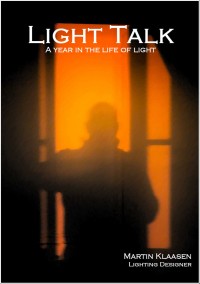The week that was…7-11 March 2016
Singapore – Kuala Lumpur – Singapore, Weekend 12-13 March 2016
Pre-Light & Build hassles
As I write this week’s blog I am already half with my mind in Frankfurt with my flight just hours away. The world’s biggest lighting exhibition, Light & Build in Frankfurt, a bi-annual event, is again upon us and I look forward with a great measure of excitement as this time I am not just there by myself but bring my key design team with me as well as assisting a delegation of the Chinese Lighting Designers Association in their visit to the fair. I have a hectic schedule with meetings, events and VIP dinners planned with manufacturers and key players in the industry that will leave me little time to breathe…As always the last few days before the trip there are heaps of last minute project issues to resolve and these last few days were no different. I even managed to squeeze out another trip to KL on which I report below. As often the case with a small practice like ours, making sure the “cash keeps flowing” is key to survival and a lot of my activities this week was linked to making sure we rounded up stages of work for signing off to client satisfaction. Sometimes it means that you need to soften your stance, deviate from your hard line of not issuing work if prior invoices have not been settled. The world unfortunately is not that black and white and my task as the principal is to make captain’s calls about progressing work for the long term benefit of the company, rather than for short term (egoistic) gains. My patience and weighted approach this week in regards to some “slow paying” clients finally paid off and I can leave for Frankfurt with peace of mind.
Kuala Lumpur
My trip to Malaysia was another typical example of a “rescue” mission that we sometimes have to carry out, not only to satisfy the client and get our payment released but also to clear our name which often gets a hiding in the process, as suppliers and contractors are quick to blame the lighting designer if it all looks like a dogs breakfast. They of course did nothing wrong, they “just followed the designer’s instructions”…These are in my opinion the moments where you learn the trade, where you become hardened in your design experience and confidence of your design skills. Even after all these years, it still amazes me, to how much length people (the supplier/contractor in this case) go to blame others (us) for the poorly performing lighting installation, while in reality poor workmanship, taking shortcuts or clearly cheating are at the origin of the poor installation. It reflects bad on everybody, us as the designers (“did you specify that???”), the light fitting manufacturers (“what a poor quality!!!”) or even the project manager or client.
I am talking about the façade lighting of IB Tower in KL a Norman Foster designed building and I am not ashamed to name the project and associate myself with it. The interiors have been completed and look stunning, however the façade lighting has been a long and frustrating road for all parties involved, I assume the contractor included. I am not privy to whether the contractor was properly paid so I cannot comment whether they had a just case to delay and hold back services for that reason, but what I do know is that none of their staff that ever came to site to do the façade and exterior lighting installation works was of any impressive level of competence, on the contrary. None demonstrated any form of expertise nor understanding of the magnitude of the task at hand, which for a 300m high tower with about 150 floodlights to be installed, would be expected. It is easy to say that in hindsight but far more difficult to detect during the process as the end result can often only be seen towards the end.
My mission this trip was to assess the current façade lighting installation, report my findings on the compliance to our specifications and show the client that the installed floodlights could, with proper care, aiming and focussing, indeed achieve the design intent as shown in our renderings. You may argue why we had not done that before, to which I have to reply that we did on many occasions but excuses and a myriad of other deflective reasons (including claimed non-support from the manufacturer) had frustratingly delayed the final testing and commissioning that we had been asking for so long. For this purpose we selected a representative area close to the ground to execute the sample testing and not surprisingly we managed fairly easily to create the required lighting effects. We duly took before and after pictures which I collated in my report to the client. I was never in doubt that we could achieve it as we had done extensive computer simulations as well as a visual mock-up which all confirmed it could be done. But when after so many months (year!) it still does not come out well, even your strongest supporters’ start doubting you!
What we learned…
We learned many things from this exercise on multiple fronts. In regards to the design; when you design a façade lighting with super narrow 4 degree beams, the slightest degree off results in the lighting effect not being achieved. This holds for both the pan and tilt angles. In this case the bracket holding the floodlight was anchored straight on to the concrete below the façade panel cladding and while we had assumed it was fixed at right angles the reality was that practically none of them are because of the uneven concrete finish. In other words giving the contractor pan and tilt angles as per computer calculations did not work as some of the brackets we found on inspection were up to 5 degrees off in either pan or tilt direction!!! No wonder that the installed floodlights are looking a like a dogs breakfast. This is where experienced installation contractors would have flagged the issue as they would not have stupidly continued aiming floodlights that were clearly not doing their job, but these guys did…but this was just one of the problems. By far the biggest issues we had on the actual workmanship and installation quality. As the floodlights are dimmable they each have an address protocol (2 actually in our case), during the installation process we had found that many of the floodlights had wrong addresses, resulting in a hotch-potch of lighting outputs, with some floodlights clearly brighter than others…oh, they claimed something wrong with the fitting…hello, can someone knock on their brains? With further poor and wrong cabling and connections (some even not connected!) you get the picture of what we have been dealing with.
The main issue was that each time we went to site to explain what needed to be done and shown them how to do it, the moment we left site it seemed like their commitment and understanding “left” as well. We have now recommended the client to terminate this contractor and have spelled out a detailed plan to remedy and finalise the façade lighting properly which will probably see us on site for a week to painstakingly aim and focus each and every floodlight one by one. The client should have made this decision long ago but I guess they hoped that with outstanding money owed to the contractor as leverage they would turn around and perform. There is obviously a limit to how much juice you can squeeze out of an orange…
I did not even mention about the Chinese replacement copies we found in some parts of the exterior lighting but that is another story… J
Have a great week-end and for some of you, see you in Frankfurt!
 Before (above) and after (below)
Before (above) and after (below)












 The long awaited book compilation of Martin's first year of blogging is available. Order now.
The long awaited book compilation of Martin's first year of blogging is available. Order now. Feedspot Top 100 Lighting Blogs
Feedspot Top 100 Lighting Blogs